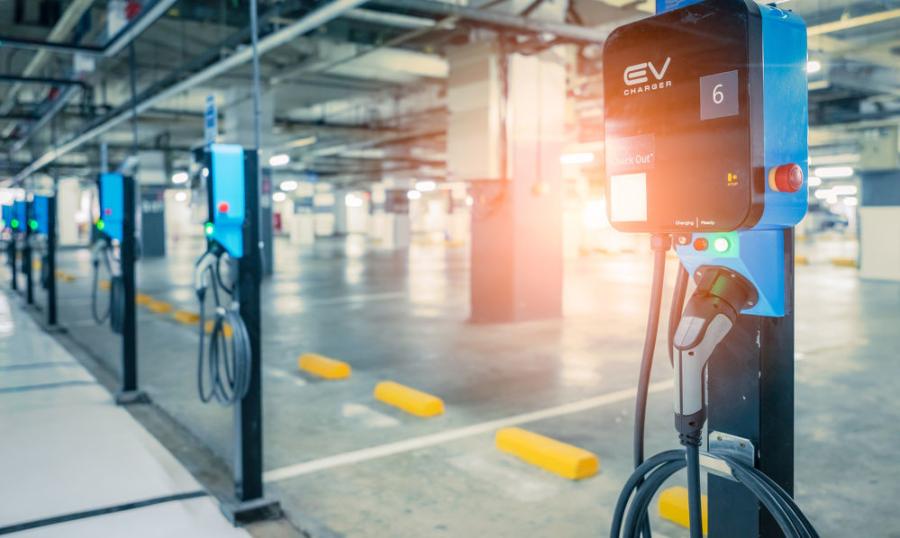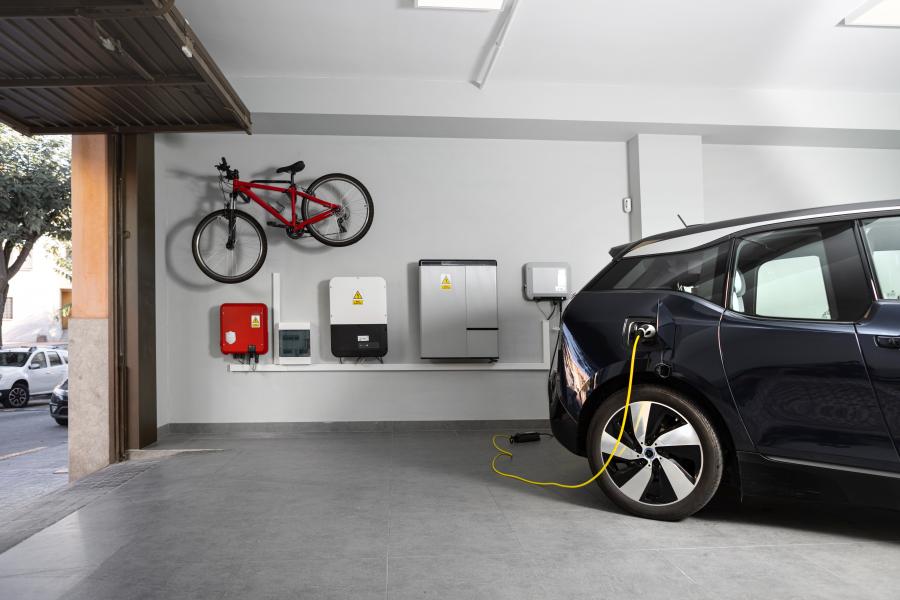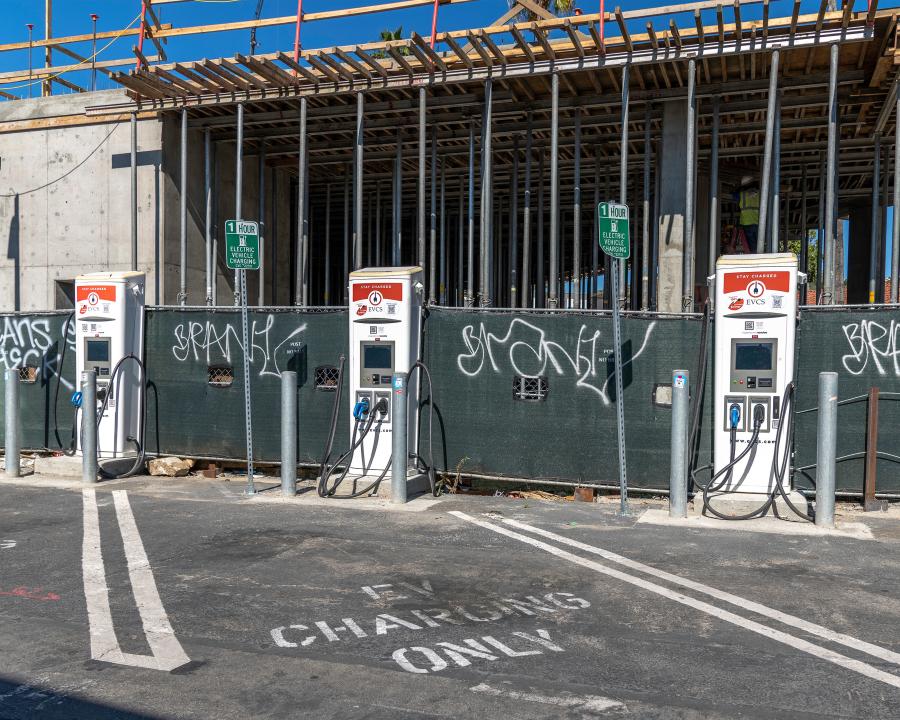The guidelines also would detail workforce requirements for installation, maintenance and operations to increase the safety and reliability of charging station function and use and create and support good-paying, highly-skilled jobs across the country.
In June, the FHWA released a blueprint for states to develop half a million charging stations, part of the Biden administration's goal of moving from gas- to electric-powered vehicles. The White House believes that in the process the plan will create jobs for steelworkers, electrical workers and laborers to build, install and maintain the network.
The vision is the installation of EV fast-charging stations every 50 miles, give or take, across the country.
A uniform system drivers can use anywhere they drive, much like the highway infrastructure system, is the end of the rainbow.
Transportation Secretary Pete Buttigieg said the administration wants a system that is accessible, user-friendly and available regardless of the type of vehicle or where the user lives.
That would mean charging stations with a mile of major highways, easily located online or through an app.
The stations would be configured with enough outlets to avoid long waits to charge. User fees would be similar across the system.
Setting the Stage
According to the department of transportation, the proposed rule would establish the groundwork for states to build federally-funded charging station projects across a national EV charging network.
The standards also establish workforce requirements for installation, maintenance and operations to increase the safety and reliability of charging station function and use and create and support good-paying, highly-skilled jobs across the country.
Earlier this year, the Biden administration earmarked approximately $5 billion for states over the next five years to build out a national EV charging network.
"To support the transition to electric vehicles, we must build a national charging network that makes finding a charge as easy as filling up at a gas station," said Buttigieg. "These new ground rules will help create a network of EV chargers across the country that are convenient, affordable, reliable and accessible for all Americans."
The IIJA provides states with the funding and framework to build out a reliable charging network, said Stephanie Pollack, deputy federal highway administrator.
"This is a foundational step that will provide EV drivers with predictable access to reliable electric vehicle charging access across the United States."
States will develop their EV deployment plans in concert with the Joint Office of Energy and Transportation, established by the infrastructure act.
The agency is providing direct technical assistance and support to states with the National Electric Vehicle Infrastructure program.
"We're making sure that charging stations are easily and equally accessible, allowing every American to get coast to coast in an electric vehicle," said Jennifer M. Granholm, secretary of energy. "The investments will not only build an interconnected national charging network, but also boost local economies and strengthen our independence from fossil fuels."
Big Picture
FHWA released other resources to help states complete deployment plans and access funding to build out the charging network.
These include new program questions and answers and a new tool to help evaluate the best locations for charging stations when it may not be possible to install at the required 50-mile intervals.
Charging stations would contain a minimum number and type of chargers capable of supporting drivers' fast charging needs.
Additionally, rules would require consistency regarding the installation, operation and maintenance of projects to provide the traveling public with reliable charging expectations.
The proposed rule would further specify the required minimum density of provided chargers, payment methods and requirements for customer support services.
Proposed rules also will set strong certification standards for the workers installing, operating and maintaining electric vehicle chargers, said DOT, ensuring funds support good-paying, high-quality jobs and chargers are installed by a highly-skilled, professional workforce.
The proposed rule also will support workforce development and on-the-job training, "building the clean-energy workforce of the future."
Other proposed requirements would help create a seamless national network of EV charging infrastructure that could communicate and operate on the same software platforms from one state to another.
They would address traffic control devices and on-premise signage; data submittal requirements to help create a public EV charging database; and network connectivity requirements to allow for secure remote monitoring, diagnostics, control.
Additionally, the FHWA proposes standardized communication of charging price and availability to help consumers make informed decisions about trip planning and when and where to charge their EVs.
Building the Grid
Ken Thomson of Facility Builders believes building EV charging stations enables the contractor to facilitate a host of people transferring their vehicular power away from fossil fuels and toward electricity.
"As accessibility to recharging stations continues to grow, the momentum is apt to snowball."
The construction is relatively straightforward, he said. Most of the interfaces are prepackaged units available from several suppliers.
The contractor's job is to set up the interface, ensure that all standards and safety regulations are met and work out parking and accessibility options with the station owner.
"Comparatively, natural gas filling stations are more complicated to construct, primarily due to accommodating the tank, controlling moisture content and the greater number of interfacing options to choose among."
Of course, details have to be worked out and choices made in the process of building.
Whether the installation is public or private, residential or commercial, the number of parking spaces with access to charging interfaces must all be determined.
One also has to calculate charging capacity, determine means of access and set the charging standard, he said.
A private station is appropriate for commercial vehicle fleets and also for individually assigned use at residences or places of employment.
Public accessibility implies the need for an interface equipped with a universal form of billing.
Public stations also need to provide more than one charging level option.
"Often when a new technology is introduced into an existing environment, some amount of alteration is necessary," said Thomson.
In the case of bringing EV charge capability to a building, one may be laying extra conduit, adjusting electrical loads and changing parking assignments.
For multiple users, such as in a condominium or office building, additional measures might mean individualizing power usage records.
"Construction contracts in such cases need to spell out the terms of tenant improvements, especially if uninterrupted continual use of the space during construction is required."
Other issues EV charging station owners should discuss with their general contractor include off-grid solutions, which can be installed under certain circumstances.
Examples are solar panels mounted on carports, rooftops or stand-alone structures.
"In some cases, unused power can be sold back to the utility," said Thomson. "Another option is to connect to a special EV network grid, the power for which is 100 percent from renewable energy sources."
For on-grid applications, it may be possible to implement a "smart grid" arrangement whereby charging is reduced at peak load hours or initiated at low-cost times.
It's crucial for all types of businesses to think about how they can become part of the new fueling network, believes ChargePoint, an EV infrastructure company.
Rich Quattrini, vice president of customer solutions, said fuel retailers face a particularly urgent need to modernize operations to remain relevant and expand revenue generation opportunities.
"Organizations need to carefully choose and design their fuel retailing sites, especially when it comes to DC fast-charging," said Quattrini.
Before even getting started with site design, though, a contractor will want to fully understand what to plan for. Here are Quattrini's seven suggested considerations:
1. How much electrical supply will be needed?
Based on location and the volume of EV charging expected, the charging partner and utility can help estimate and request the type of electrical service and amount of power from the utility.
2. How much space is available for infrastructure?
Along with evaluating electrical needs, the amount of space available where that space is relative to other infrastructure, must be considered. Scaling to serve and provide fuel for a whole new set of drivers, think about where to put new electrical panels, remote power cabinets, conduit runs and the charging stations themselves.
3. What are the accessibility laws in the area? How will path of travel be accounted for?
Make sure to understand the accessibility requirements for the DC fast-charging installation jurisdiction. Where necessary, ensure appropriate access aisles as well as clear pathways into a convenience store from at least one charging stations. Think about wheelchair-accessible charging stations, curbs and tripping hazards to ensure convenient and safe customer flow.
4. How can finding and using chargers be simplified?
Lighting and signage are likely already in place on a gas fueling forecourt. Consider additional signage, online access and an app for wayfinding.
5. How will both commercial and passenger vehicles be served?
As larger EVs will visit a location, consider whether access by vehicles of all types will be allowed. How a site is configured will depend on what types of vehicles will be charging and where the charging ports are located. For most passenger vehicles, simply pulling or backing into a spot is the most desirable configuration. For larger vehicles, commercial vehicles or vehicles towing trailers, consider pull-through configurations for EV charging. Significant space is needed, so that can also factor into the layout.
6. What will be your next phase of fast charging site development?
While new technology will enable future EVs to charge at higher speeds, continued support of older EVs will also be critical. Avoid overbuilding, but put in a flexible solution that can expand over time when there are enough drivers to support payback on investment.
7. How will the project be funded and what can impact the return on investment?
EV charging is the future of fueling. Keep in mind funding regulations including locating charging sites in specific areas and offering a minimum charging speed. CEG
Lucy Perry
Lucy Perry has 30 years of experience covering the U.S. construction industry. She has served as Editor of paving and lifting magazines, and has created content for many national and international construction trade publications. A native of Baton Rouge, Louisiana, she has a Journalism degree from Louisiana State University, and is an avid fan of all LSU sports. She resides in Kansas City, Missouri, with her husband, who has turned her into a major fan of the NFL Kansas City Chiefs. When she's not chasing after Lucy, their dachshund, Lucy likes to create mixed-media art.
Read more from Lucy Perry here.
Today's top stories
















